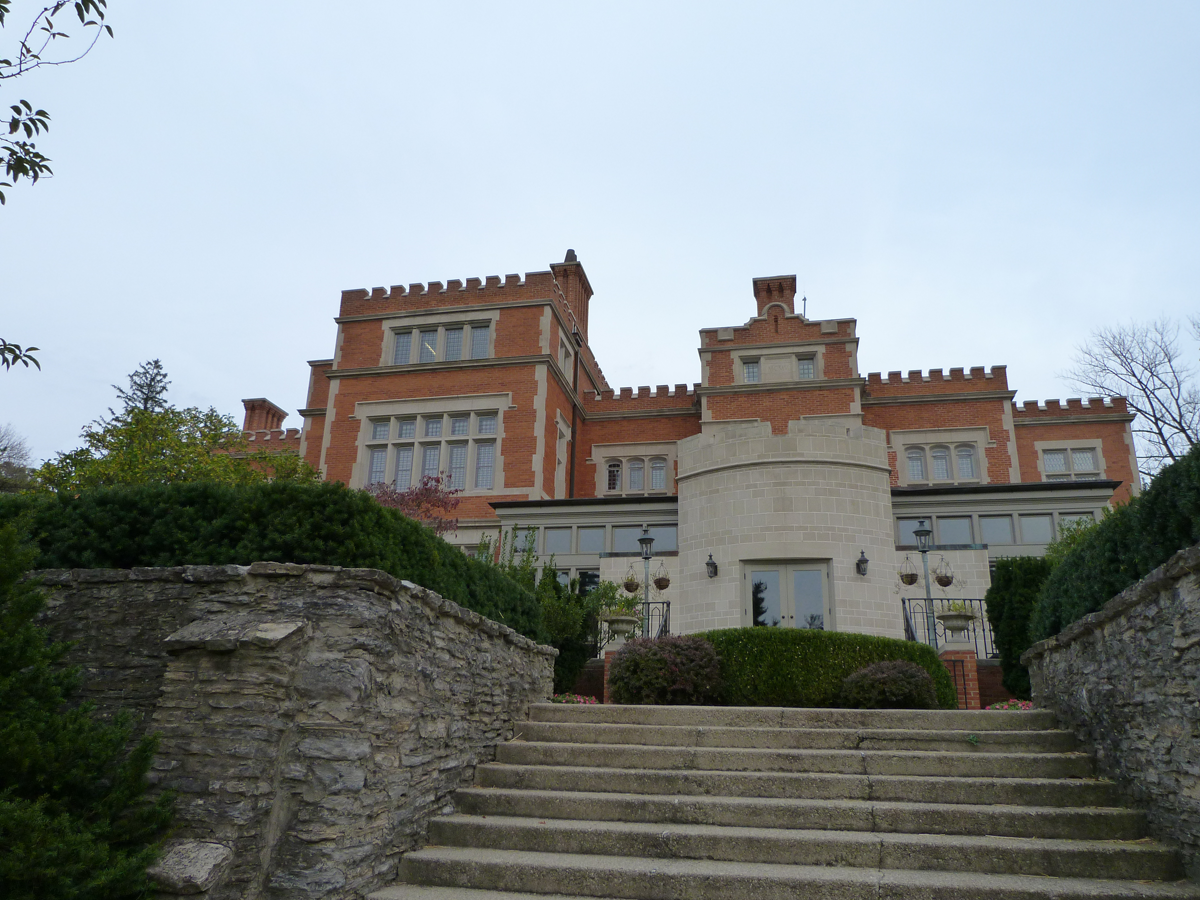As jack-o-lanterns and scarecrows appear on porches and doorsteps nationwide, conversations turn to ghosts and other supernatural occurrences. In October, ghost stories are no longer limited to a campfire. Did that kid in the MDR really see something spooky in his residence hall, or does he just hope the story will attract some female guests? Armed with my trusty camera, pen, and paper, I set off to find out.
My first stop was an interview with Nellie Kampman, who works as a medium and past life reader. Her first book, A Haunted History of Columbus, Ohio, was published this year. If I was going to be talking about ghosts, it seemed Kampmann was the person I should be talking to.
One surprising fact she came across while working on her book was the sheer number of haunted locations in and around Columbus.
“I sat down and made a list of all the hauntings I could think of offhand. I came up with over 50 just within or very close to the downtown area alone. I find out about more all the time,” Kampmann said. She was stunned by the amount of violent crimes her research discovered, including “a serial murderer on the loose at The Ohio State University in the 1920s.”
Even Capital has ties to one of what Kampmann considers one of Columbus’s most haunted locations.
“Fernando Cortez Kelton, who built [Kelton House Museum & Garden] and is said to be still hanging around, was one of the charter members of the Board of Directors for Capital,” Kampmann said.
Kelton House
Following Kampmann’s advice, Kelton House was next on my list. Although I visited during the tour hours listed on their website, I was disappointed to find the place locked tightly. Not wanting to miss out on an adventure, I helped myself to a tour of the garden. I was struck by the vacant wooden bench situated near the back of the home. Although no one else was in the garden, it was easy to imagine a turnof-the-century couple lounging there, discussing the affairs of their day.
I doubt that bench was around in kelton’s time, but the garden contained features that must have graded Kelton’s original backyard.
Chief among these was a variety of stonework, ranging from two weathered pillar-like structures flanking one walkway, to crumbling stone statues of pineapples and baskets of fruit. I remember from a childhood trip to Colonial Williamsburg that such pineapple statuary was common in early America to symbolize hospitality.
Greenlawn Cemetery
After Kelton House, I paid a lengthy visit to Greenlawn Cemetery.
This place was huge. Rather than attempt to look for a specific ghostie, I decided to point my trusty orange Chevy down one of the winding gravel roads and let my instinct guide me.
Turns out, my instinct did a pretty good job of leading me to the ghosties, anyway.
My first lengthy stop was at the section reserved for veterans of World Wars I and II as well as the Korean War. The sight of the rows upon rows of aging white tombstones peppered with the occasional American flag was sobering nearly to the point of overwhelming.
While I certainly can’t attest to the presence of any visible ghosts in this area, I was struck by intense emotions near a couple of the graves. Whether this was the work of the supernatural or just spending too much time in a graveyard, I don’t know.
Next, I voyaged to a pretty large area that housed a few interesting gravesites and small buildings. It turns out that two of these buildings, the Hayden and Gay Mausoleums, are purportedly haunted.
Jeffrey Mansion

On my way back to Capital, I decided to stop at one more real-life haunted house. The closest haunting to home, Jeffrey Mansion is a favorite spot for picnics and senior photo shoots. Before researching this article, I had no idea the home was supposedly haunted. I’ve visited the grounds many times and had no idea that Mr. Jeffrey might still pay the occasional visit to his former home.
Over 100 years ago, Jeffrey Mansion was built as the residence of industrialist and early Columbus City Mayor Robert Jeffrey. Jeffrey served as mayor from 1903-1905 and willed his home to the city of Bexley in 1941.
The traditional ghost story states that Jeffrey hung himself in his home before granting the city rights to his property. Howeve
r, records list Jeffrey’s death occurring in October of 1961, a full 20 years after bestowing his home upon the city.
While this little bit of information makes me doubt Jeffrey committed suicide in the home, other reports attest to the presence of cheerful, yet unexplained whistling in a second-floor hallway so perhaps Jeffrey visits his old home to check up on the Bexley Department of Par
ks and Recreation, which now calls the mansion home.
Looking for something scary even closer to campus? Students, faculty and staff have reported supernatural experiences in both Battelle Hall and Kerns Religious Life Center.

